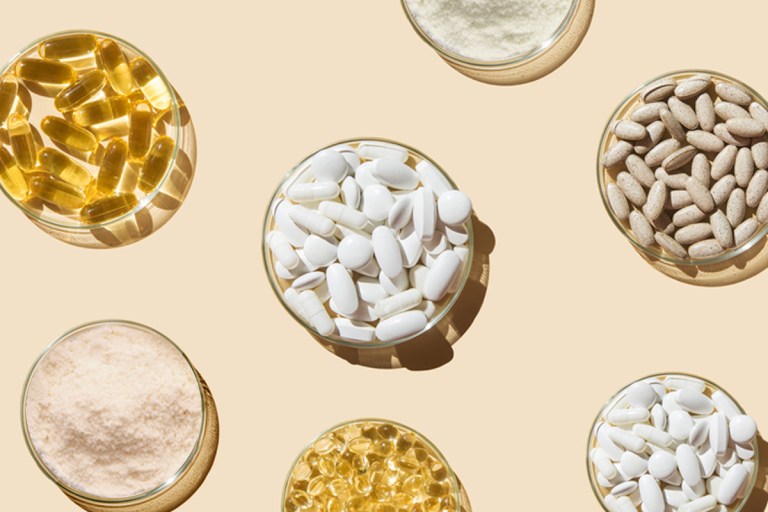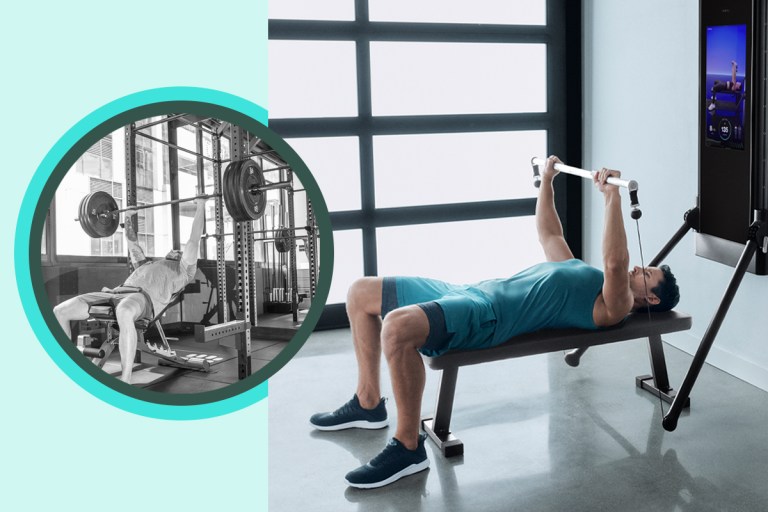How to Speed Up Muscle Recovery So You Can Crush Your Next Workout
Try these strategies to relieve sore muscles after a tough sweat session.

It’s not unusual to finish a hard workout feeling on top of the world: You’re amped up and proud of yourself for taking on a big challenge. However, it’s also not unheard of to wake up the next day and feel like the world’s come crashing down on you: Your muscles are epically sore and even squatting down to sit on the couch feels like a major effort.
Fortunately, your body initiates the recovery process as soon as your workout is over—but there are steps you can take to speed up muscle healing and avoid getting that sore in the first place.
What is Muscle Soreness?
Acute soreness is the result of a temporary buildup of metabolic byproducts in your muscles, and it typically fades quickly after a workout. But the soreness that lingers days after your final rep is known as delayed onset muscle soreness (DOMS).
DOMS is caused by microtears in the muscle fibers that form during intense exercise, according to Jacob Rauch, CSCS, PhD candidate, and performance manager of applied training science at Tonal. This damage then activates an inflammatory response in the body that can lead to pain and even swelling. DOMS usually appears 24 to 48 hours after a workout and peaks within 72 hours. Eccentric muscle contractions, in which the muscle is lengthening (the lowering portion of a bicep curl or striding downhill, for example), are even more likely to cause soreness.
Soreness typically occurs after a new or unusually strenuous training stress, but if you plan your workouts appropriately, you shouldn’t experience it with every session. In fact, research has shown that muscle damage is not necessary for improvements in strength or hypertrophy, proving you can get the gains without the pain.
“The best way to not get sore is to give yourself the optimal amount of work,” says Rauch. By following the principle of progressive overload, gradually increasing the stress of your workouts (in terms of volume, intensity, or work density) over time, you can avoid frequent soreness. A good rule of thumb is to only increase any of these factors by five to 10 percent each week, says John Christie, CSCS, RD, and Tonal Director of Curriculum.
How to Speed Up Recovery
When the occasional workout does leave you aching, there are steps you can take to speed up your recovery. Here are Rauch and Christie’s top tips for easing muscle soreness.
Dial in Your Nutrition
The food you eat plays an important role in recovery, and you can start taking in essential nutrients as soon as you finish your workout. “Consuming a combination of protein and carbohydrates within 30 minutes to an hour after exercise can help jumpstart the recovery process by providing essential nutrients for muscle repair and glycogen replenishment,” says Rauch.

Protein plays a major role in muscle protein synthesis, building muscle, and repairing damage, and studies have shown that getting in 20 to 40 grams of protein in your post-workout meal can enhance the process. Additionally, carbohydrates are important for replacing glycogen that’s been used as energy during your workout. Depending on the length and intensity of your workout, Christie recommends consuming 0.5-3 grams of carbohydrates per gram of protein after exercise.
Any complete protein source should include 2.4 to 2.7 grams of leucine, an essential amino acid (amino acids are the building blocks that make up protein), in a 20-gram serving. This amino acid is especially important because it “flips a switch” that activates muscle building, Christie explains. Leucine is found in sufficient amounts in most animal-based protein sources, but vegans may want to consider additional supplementation.
Protein consumption – even on rest days – isn’t a one-and-done deal. To maximize your recovery and build and maintain muscle mass, you’ll want to eat 1.4 to 2 grams of protein per kilogram of body weight spread out throughout your day, according to a position statement from the International Society of Sports Nutrition. This is far beyond the recommended daily allowance of 0.8 grams per kilogram of body weight, which Rauch says is “very low” for anyone doing resistance training. He recommends splitting up your daily protein intake into servings of 20 to 40 grams every three to five hours.
Along with protein, your daily diet should include adequate carbohydrates, healthy fats, and fluids to promote recovery and keep you fueled for your next workout. To cover all your bases, , Rauch adds that you can supplement with an additional 40 grams of casein protein, a slow-digesting protein, before bed on the day of a hard workout. Emerging research suggests consuming casein pre-sleep can improve recovery.
Optimize Your Sleep
After nutrition, Rauch says sleep is the second “big block” in muscle recovery. “Sleep is when your body engages in tissue repair, muscle growth, and hormone regulation,” he says.
He recommends shooting for seven to eight hours of sleep and practicing smart sleep hygiene to improve the quality of your slumber. First, stick with a consistent schedule that’ll help regulate your body’s internal clock. This might mean going to bed and waking up earlier than you might like on the weekends, but it’ll have a big impact on your overall recovery. Next, establish a calming bedtime routine that’ll help you transition from your daily grind to nighttime rest. Whether your routine includes reading, gentle stretching, or a warm bath, repeating these activities at night will set you up for a good night’s sleep.
Alcohol and caffeine have been shown to interfere with sleep, so it’s best to avoid these substances, especially close to bedtime. Finally, studies show that maintaining a cool, dark, and quiet bedroom is most conducive to improving sleep quality.
Practice Active Recovery
Exercise might be the last thing you want to do when your muscles are aching, but some low-intensity movement can actually speed up recovery. The day after a tough workout, try active recovery in the form of walking, gentle cycling, or easy bodyweight exercises. “These activities increase blood flow to your muscles, which helps deliver nutrients and remove waste products, aiding in the recovery process,” says Rauch.

This is also a good time to try a slow-paced yoga class or get some easy stretches in on your own. “Gentle stretching after workouts can help improve flexibility, reduce muscle tightness, and enhance blood circulation,” says Rauch. “Just be sure to avoid aggressive or intense stretching, especially when your muscles are still sore.”
On Tonal, recovery workouts allow you to lift at a reduced weight to practice movement patterns and improve range of motion as your muscles bounce back. Try Full-Body Deload with Coach Kristina Centenari or Just Enough Active Recovery with Coach Ash Wilking.
Try Myofascial Release
A massage, whether done by a professional or on your own with a foam roller or lacrosse ball, probably sounds very appealing when you’re suffering from soreness, and some studies have demonstrated that massage can be effective in alleviating DOMS.
Myofascial massage specifically targets the fascia, or the connective tissue that surrounds muscles. When the fascia becomes stressed, it tightens up and limits mobility. Massage and foam rolling loosen up the fascia, making it more flexible. By desensitizing localized pain and decongesting inflamed tissues, Christie explains that this type of massage can be helpful in reducing soreness.
Massage isn’t a replacement for poor sleep or nutrition, according to Rauch, but it is a good supplemental tool in your recovery arsenal. “If anything helps you feel better, I would say it’s not going to cause a detriment,” he says. (The exception is applying ice immediately post-workout, which studies show can actually slow healing and blunt hypertrophy gains.)
The Bottom Line
Despite the popular “no pain, no gain” mindset, excessive soreness is not a sign of a productive workout. By following a progressive training program, you can build strength and grow muscles without hobbling around the next day. However, soreness is inevitable on the occasions when we expose our muscles to a new or exceptionally challenging stimulus. When that happens, maximize recovery by optimizing your sleep and nutrition and practicing active recovery and myofascial release techniques.
The information provided in this article is for educational and informational purposes only. Individuals with pre-existing health conditions, injuries, or concerns should consult with their healthcare provider before trying a new exercise or nutrition regimen.


